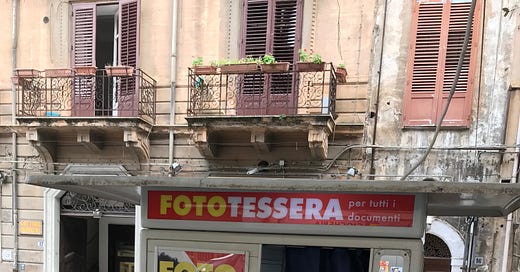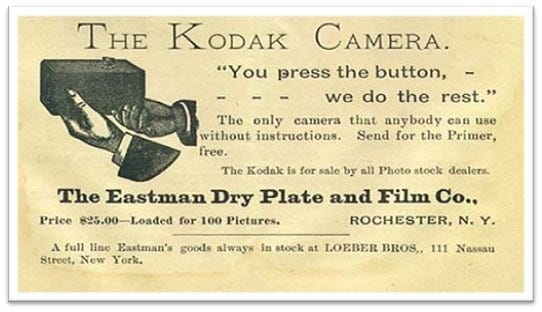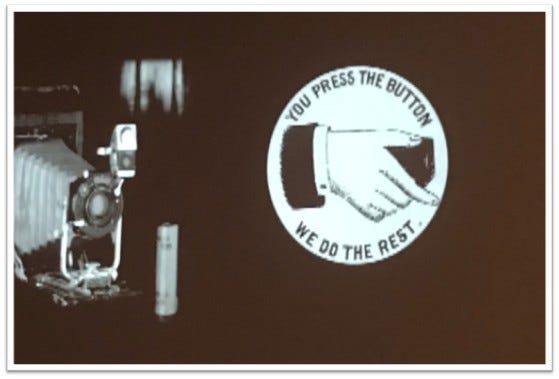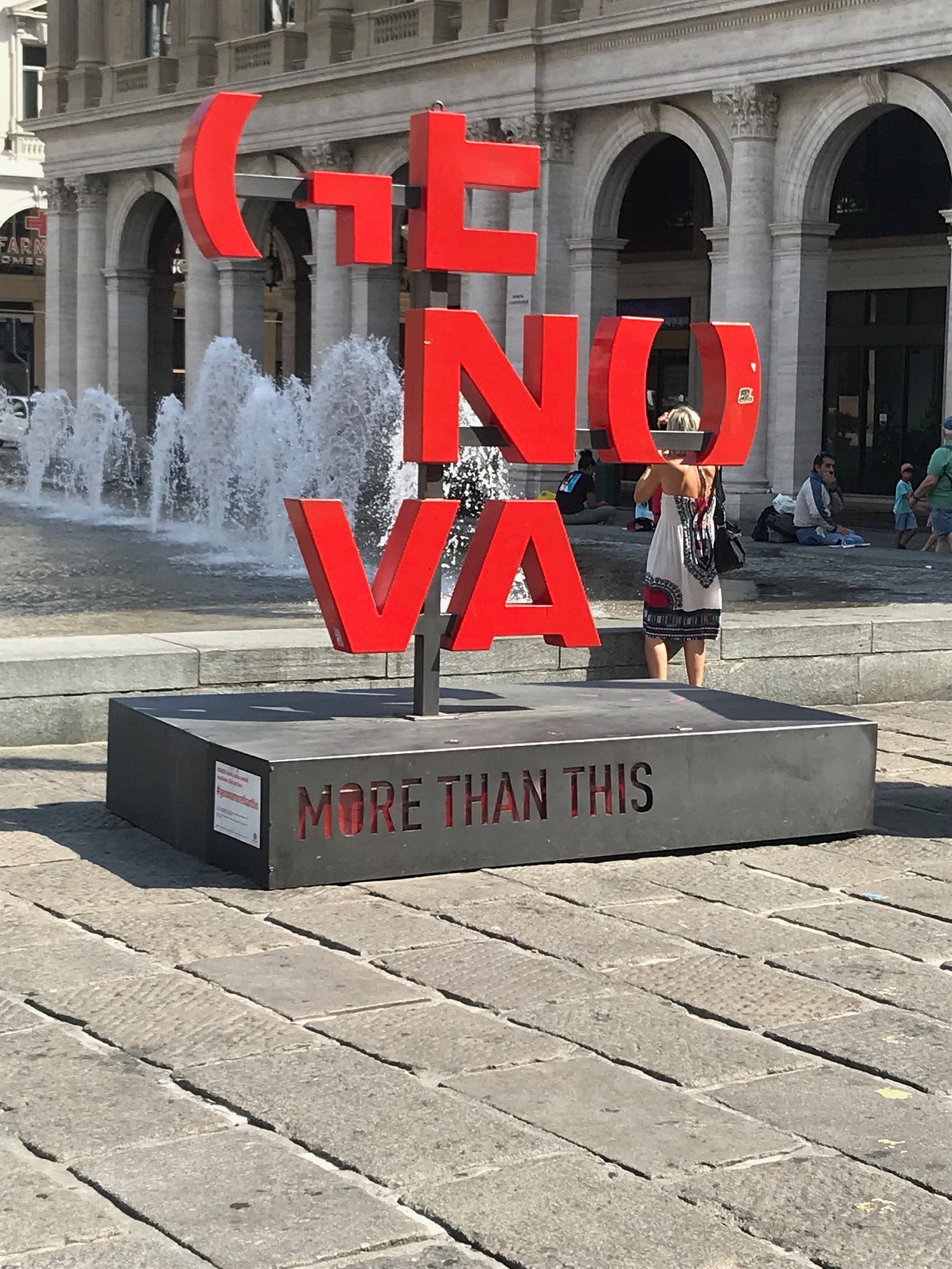“You Press the Button, We Do The Rest.” The 1888 Kodak tagline that inspired GenAI
And TikTok and loads of other billion dollar businesses
I’m old enough to remember “the Kodak Moment.”
Still one of the best taglines ever created.
Your roll of 36 done, off you went to the local one-hour photo lab, waiting — waiting! — while they processed your film and handed you back your Scenes.
Kodak, like every company past, present, and future, was / is in the Scene business.
According to the internet, today’s Kodak Moment can “also refer to a business's failure to adapt to technological change.”
Interesting, because technology businesses (indeed all businesses) certainly didn’t fail to adapt (or fail to adopt) to what Kodak brought.
While the Kodak Moment (might have) disappeared, its Scene DNA has bred billion dollar businesses than run on the same basic philosophy: We’re all just selling Scenes.
For over a hundred years, Kodak inspired great Scenes, which inspired more great Scenes – and a mantra I’m very fond of repeating: “Great Scenes, pass them on.”
Ask the start-up that got funded, the new hire that aced the interview, the video creator that went viral … or the negotiation teams that found a settlement inside previously un-Acknowledged Scenes.
The stories we understand are the Scenes we emotionally connect with.
Further defined in SceneThinking™ terms, Scene-solving is story-solving … and when we trust the Scenes we’ve seen, we pass them on … to friends, colleagues, bosses … the investment committee or the governments we represent.
The Kodak Moment meets the TikTok Moment meets the AI Moment
We live in a Scene world. At the time of SceneThinking’s founding, Instagram and Snapchat were in early growth stages, TikTok hadn’t been heard from yet, and global smartphone penetration was less than half of what it is today.
We were just beginning to hit our Scene on mobile screen loving stride.
When I toured the Museum of Cinema in Turin in 2019 (highly recommended by the way), interactive Kodak history brought me into the makings of the Kodak Moment — and the 1888 tagline that preceded it: “You press the button, we do the rest.”
"You Press the Button, We Do the Rest" was an advertising slogan coined by George Eastman, the founder of Kodak, in 1888. Eastman believed in making photography available to the world, and making it possible for anyone who had the desire to take great pictures.
Until then, taking photographs was a complicated process that could only be accomplished if the photographer could process and develop film.
With his new slogan, Eastman and the Eastman Kodak Company became wildly successful and helped make photography popular.
You press the button, we do the rest.
Now if that isn’t a tagline for the GenAI Moment, what is?
We certainly are pushing the buttons … and purposefully or not, AI is doing (quite a bit) of the rest.
Eastman’s desire to “make things possible” … less complicated … where have I seen that recently, Mr. Altman?
An-y-way …
Let’s talk TikTok, shall we?
My TikTok moment
It was Saturday mid-afternoon when I sat down at a Bangkok pop-up food stall next to a hidden alleyway intersecting two low-rise apartments.
Being the only customer, the service was immediate — so too the sight of a young Thai couple setting up a TikTok Scene against a graffiti tagged wall undisturbed by human traffic (or me watching from the lone table some twenty metres away).
Their shoot — involving the classic front facing, vertical video style, the proven TikTok formula — was a mix of choreographed dance steps, hand-signals, and lip-synched lyrics (music and visual effects added in the edit).
After a few minutes of feasting on khaow pad gai kai dao and watching them operate, I took my conversational Thai over for a chat. Turns out they’d scouted this alley. As dedicated TikTokers, their strategy was finding fresh locations. “Makes us different,” they said, rattling off over-exposed districts they wanted no part of.
Their goal in all of this?
An obvious answer: “We want to be influencers.”
A big base of loyal followers is the influencer prize, of course. Followers who trust the uniqueness of the Scenes you produce, participating with clicks, views, shares and likes (valuable Acknowledgements for AI to use).
Discovering unique locations was how their “scripts” always started. A strategy that would (maybe) get them the influencer break they needed, landing sponsors who also liked the uniqueness of their Scenes (and the volume of their followers). We have Decided to add your Discoveries to our paid creator network.
TikTok did one thing to set the foundation of its phenomenal growth.
It created a place for people to Acknowledge their potential to do more with Scenes.
An opportunity to project onto a world stage — and a huge audience was ready to embrace it. It’s my moment now.
Ever made a TikTok video? I haven’t … but my alley creators gave me a ten second tutorial — short of saying, “You press the button, TikTok will do the rest” (but it was close).
Nothing comes from nothing as I like to say, and TikTok’s place of human creation — their place where moments could be captured for sharing with a network of friends and family (and strangers who trust you) — evolved from a photography empire that knew there was a business to be made from moments.
Imagine more with Kodak. Imagine more with TikTok.
And now? Imagine more with [insert your company name — and the uniqueness of the Scenes you produce inside and outside the firm.]
(Side note: after I met my video creators, I pushed a few buttons on a retailer’s AI chatbot to sort out a customer service issue I was having. The efficiency was impressive — and bound to get even more impressive.)
Connecting with rhythm. The secret TikTok sauce that isn’t a secret at all
In their observation of the rapidly expanding world of content creation, TikTok hit on something that gave us all the “why didn’t I think of that moment.”
When they launched worldwide in 2018, it was all about leveraging the power of music.
And so the make your own video tidal wave of success began — which then expanded into just about any content imaginable, getting our attention with simple, useful, entertaining, heartfelt, funny … Scenes.
Music is the universal language that allows us to project ourselves in uninhibited ways
I live in Asia, and for decades I’ve seen the quietest, shyest people take over the karaoke microphone (sober!). Many of my best work relationships only started after we sang some songs together.
My singing skills are 2 out of 10 (generous review) — but it doesn’t matter. What matters is the Acknowledged, Relatable bond we made through singing together. From that, Decisions were made to Discover more.
Karaoke is ARDD! (As I — sort of — talked about last week).
Rhythm is more individually influential than anything GenAI can create
Why?
We all Relate to rhythm and how it makes us feel.
That go-to song that instantly energizes your mood? The one that brings you back to a better time?
I meet many who can’t tell me their favourite movie, but they are quick to tell me a favourite song. That feeling, those moments, never go away.
Rhythm motivates our day. It makes us better communicators and better listeners … and happier humans.
So how was your meeting with the client? Great! Both sides presented their ideas, we have a strategy meeting schedule for next month.
In other words, the meeting was great because the rhythm was great.
It clicked — and it very likely carried you into the next meeting … and the rest of the day. (Great Scenes … press the button … and pass them on!)
Rhythm isn’t always easy to create and music doesn’t always help fix it. But as mentioned earlier, how are we thinking about the uniqueness of the Scenes we are creating and communicating and what is that doing to the office rhythm?
Every meeting, every call, every moment at the water cooler, the lunch table, the ping-pong table, the lifts, the coffees … the emails … all of that creates a Scene … which creates a rhythm.
(Side note: for answers to important, unresolved issues, analyze your Scene forensics … not just your accounting forensics.)
Offices with humans are rhythm dependent places.
We feel different today than we did yesterday. Rhythm creates this negotiation we have with ourselves. How am I feeling … after that meeting, presentation, pitch, job interview … ChatGPT summary — that it produced in under three seconds?
What are we Acknowledging — or not Acknowledging — about the current state of our rhythm?
Every company, every office can should must start thinking about the “state of their rhythm.” It’s not that difficult.
“We are Scene machines” — all of us — and we are letting AI scrape value from our living, breathing Scenes, tapping directly into the very thing that fuels our entire lives.
We live in a Scene world!
Scenes are a crucial part of our human source code.
Should we be so quick to share our valuable source code with a competitor? (And yes, AI does possess some competitive qualities which we are all aware of.)
Perhaps it’s time we started charging for access — or at least keeping the best Scenes for ourselves?
One day we’ll be glad we did.
My TikTok alleyway creators moved on to their next location. “We need to get there before anyone else finds it.”
You press the button … you do the rest.
It’s your moments.
Own them … one Scene at a time.
In this episode of “Surprising Scenes Spotted” …
I dig into the archives to find a photo I took in Genova, Italy in 2019 — after receiving a heavy dose of inspiration from Turin’s Cinema Museum.
What are we Acknowledging? What are we not Acknowledging?
There is always much more than this to Discover.
Thank you, Genova and thank you all for your interest in Humanaivolution.
If you like these posts … these Scenes … please subscribe or pass them on … or better yet, do both.
It’s free!









Your Bangkok story got me thinking: those creators’ hunt for unique locations mirrors how we chase distinct rhythms in life, from songs to conversations. As AI scrapes more of our Scenes, I wonder if the ‘state of our rhythm’ could be our edge—those unscripted, human beats AI can’t replicate - or will AI become undetectable to our feeble human senses?